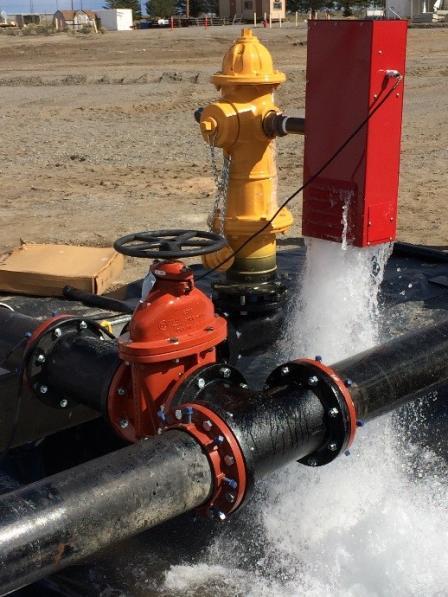Water Infrastructure Decontamination
Intentional or unintentional contamination of a drinking water distribution system could affect human health and result in high costs to return the water system to service. Many contaminants can adhere to or become embedded in rusty or corroded pipes or in biologically active layers (biofilm) on the pipe walls. Chemicals and biological organisms also react with substances in the water and on the pipe walls. Because of this, EPA examines techniques to clean, or decontaminate, contaminated water infrastructure including, pipes, valves and tanks. Of special interest to the Agency are chemical and biological agents, contaminants that can be adapted for use as weapons. The approach that EPA takes to infrastructure decontamination research is as follows:
- Understand the persistence of contamination on water infrastructure by conducting fate and transport studies. For example, some chemical contaminants may not stick to pipe material and can easily be flushed out of a water system. Water system contamination by biological agents may not require decontamination of the infrastructure if the biological agent(s) can be inactivated or killed. In these cases, management of contaminated water is a key research focus.
- Conduct bench, pilot and full-scale decontamination studies on persistent contaminants. Bench and pilot scale studies take place at EPA’s Test and Evaluation (T&E) facility in Cincinnati, Ohio. Field scale decontamination studies using real water pipe occur at EPA’s Water Security Test Bed (WSTB) located on the grounds
 A hydrant at the Water Security Test Bed of Idaho National Laboratory. The WSTB is made of 450 feet of 8-inch used drinking water pipe that was excavated from the Idaho National Laboratory grounds. Water flows through the pipe just as it would in a real city, and the pipe has removable coupons (excised sample material) so the inside pipe surface can be sampled for contaminant persistence and decontamination effectiveness.
A hydrant at the Water Security Test Bed of Idaho National Laboratory. The WSTB is made of 450 feet of 8-inch used drinking water pipe that was excavated from the Idaho National Laboratory grounds. Water flows through the pipe just as it would in a real city, and the pipe has removable coupons (excised sample material) so the inside pipe surface can be sampled for contaminant persistence and decontamination effectiveness.
Related Links
- EPA's Testing and Evaluation Facility
- EPA's Water Security Testbed
- EPA’s Water Security Test Bed (WSTB) video EXIT
